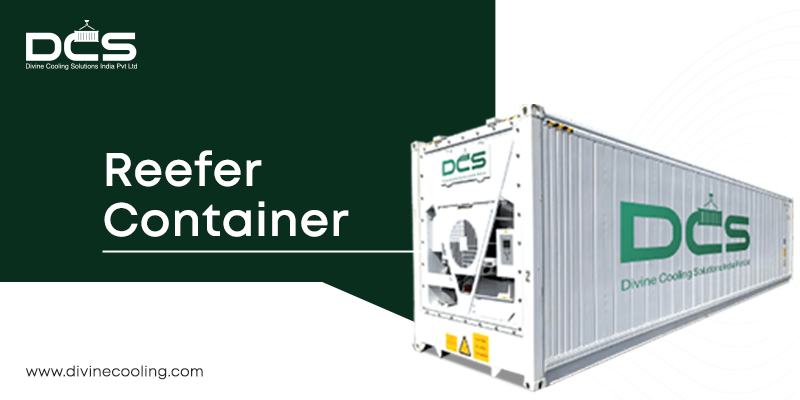Reefer or refrigerated containers, a commonly heard term across industries, are widely used for storing temperature-sensitive and perishable products on their own premises as portable cold storage rooms.
Do you know anything more about reefer containers? Worry not – we’re here for you. Thus, this blog answers some of the most commonly asked questions about reefer containers or cold container storage on rent.
What Parts Do Reefer Containers Have?
A reefer container comprises several parts, most of which are:
- Cooling coil
- Control box
- Controller Keypad
- Controller display
- Compressors
- Condenser fan
- Condenser coil
- Evaporator fan
- Evaporators
- Insulation
- Motor access panels
- Microprocessors for controlling the refrigeration equipment
- Refrigeration unit
- Rear doors
- Temperature sensors
How Does a Refrigerated Container Work?
By cooling air
A generator fan blows the air into a reefer container from one side of the box, which then passes through a T-style (generally designed this way) floor to reach and cool the cargo. These containers are designed in several models, each capable of maintaining different temperatures both on the cold and hot side.
The desired temperature is obtained by directing the air towards the goods through the T-shaped floor. Moreover, these containers have control units, allowing the adjustment of different parameters like ventilation, temperature, humidity, and atmosphere. The entire internal setting of the reefer container depends on the external environment and the type of product stored. To ensure an ideal cooling flow throughout the containers, they need a constant electricity supply.
What are the General Tips to Store Products in Reefer Containers?
Some tips to consider when storing temperature-sensitive or perishable items in the reefer containers are:
- The amount of goods stored should be within the container’s limit, i.e., don’t store beyond the floor shape.
- The limit should not cross the red load mark.
- The load should be tightly secured to avoid movement or damage caused by the external environment.
- Set internal temperature according to the type of goods stored inside.
- Make sure to check dehumidification controls if required.
- If pre-cooling is to be done, ensure that the container is locked tightly and appropriately.
- Block all ways external air can enter the container, ultimately affecting the internal temperature and the goods.
- Keep container flooring neat and clean regularly
How Much Do Reefer Containers Cost?
The cost of reefer containers depends on several factors, including:
- Whether you purchase or rent the container
- Whether the container is used or new or refurbished
- Whether you wish to purchase remote smart monitoring for the container.
- Whether the container is a 20 foot refrigerated container, 40 foot refrigerated container, or some other size and model
- The type of goods you need to store, at what temperature and the specifications required for the same.
Conclusion
Businesses dealing with portable cold storage containers aka reefer containers, it is important for you to know several aspects including tips to store goods in this cold storage solution. Hopefully, the information in this blog will help you maximize efficiency and minimize risks when storing your valuable temperature controlled products in reefer containers.
 :
https://divinecooling.com
:
https://divinecooling.com












